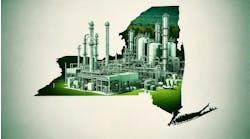In recent columns, I discussed various ways to identify energy efficiency improvements and implement energy management. These include process flow diagram reviews, online optimization, energy performance indicators (EnPIs), and energy management systems of various kinds. Last month focused on human factors that can influence energy performance (see: “Behold the Impact of Human Behavior”). All are important topics — but to achieve plant energy savings you must translate your ideas into a change in how your plant runs. This happens in four main ways (what I call elsewhere “the four pillars of industrial energy efficiency”) — operational improvements, effective maintenance, engineered improvements, and new technologies.
Pillar 1. Operational improvements. Many such improvements can involve little or no cost. This makes them particularly attractive where energy prices are low and it is difficult to justify investment in energy-efficiency projects. Also, before committing to projects that require capital expenditure, confirm the existing equipment is being used to its full advantage.
When we identify suboptimal operating practices, the first response generally is to modify operating parameters (e.g., change control valve setpoints). However, this is only a short-term fix. Taking additional energy management steps will ensure the improvement becomes permanent. These might include:
- carrying out additional operator training;
- modifying operating procedures and update documentation;
- adding control valves and/or automation;
- implementing real-time optimization systems; and
- installing performance monitoring systems with EnPIs.
Pillar 2. Effective maintenance. If we are to get the most out of existing facilities, the plant must be properly maintained, especially the equipment and systems that have the largest impact on energy use. These include heat exchangers (especially those in preheat services, and some condensers), furnaces and boilers, steam piping, steam traps, insulation, compressors, pumps, and turbines. The most common maintenance programs and activities include:
- boiler and furnace tune-ups;
- convection bank cleaning;
- steam system management programs, including steam leak and steam trap surveys and repairs; and
- heat exchanger fouling surveys, analysis and cleaning.
When problems recur frequently, it is wise to explore root causes. For example, with recurrent steam leaks the underlying issue often is poor piping design or inadequate drainage. Correcting the root cause (e.g., re-routing steam lines, adding drop legs or replacing failed steam traps) can eliminate — or at least minimize — the occurrence of future steam leaks, and the cost and inconvenience of further repairs.
Pillar 3. Engineered improvements. Additions and upgrades to existing plant facilities, and modifications to new plant designs can lead to significant improvements in energy efficiency. Examples include:
- resequencing equipment (e.g., heat exchangers in a pre-heat train);
- replacing or upgrading electric driver systems (e.g., installing variable frequency drives);
- adding or modifying heat exchangers, steam turbines, distillation columns, etc.;
- new control schemes; and
- upgrading catalysts.
Engineered improvements can be expensive, and often are difficult to justify based on energy savings alone. However, many of these projects bring additional benefits (e.g., product quality improvements, better reliability, or increased capacity), which enhance the economics. Factoring in a “cost of carbon” (e.g., carbon tax) also improves the project return.
Pillar 4. New (or breakthrough) technologies. Engineered improvements apply proven solutions to identified problems. In contrast, solutions that incorporate new (or breakthrough) technologies require validation through research and development. They need more time to implement, and their degree of technical and financial risk is higher.
Some of the largest energy efficiency improvements have come through technological breakthroughs. A well-known example is the development of the low-pressure polyethylene process in the 1950s. This was a major advance over the older high-pressure process, and the new process used much less energy per unit of production. More-recent examples include the Dow/BASF hydrogen peroxide to propylene oxide (HPPO) process, which reduced energy usage by 35% compared to earlier propylene oxide technologies; and Shell’s OMEGA ethylene oxide/ethylene glycol (EO/EG) process, with 20% less steam demand and 30% less wastewater than a traditional thermal conversion monoethylene glycol plant.
Incorporating new types of equipment — e.g., novel heat exchanger designs and distillation columns packings — in existing processes also can lead to significant energy savings.
Resource
Alan P. Rossiter, “The Four Pillars of Industrial Energy Efficiency,” Chemical Engineering Progress, Vol. 111, No. 5, pp. 40-44, May 2015.



